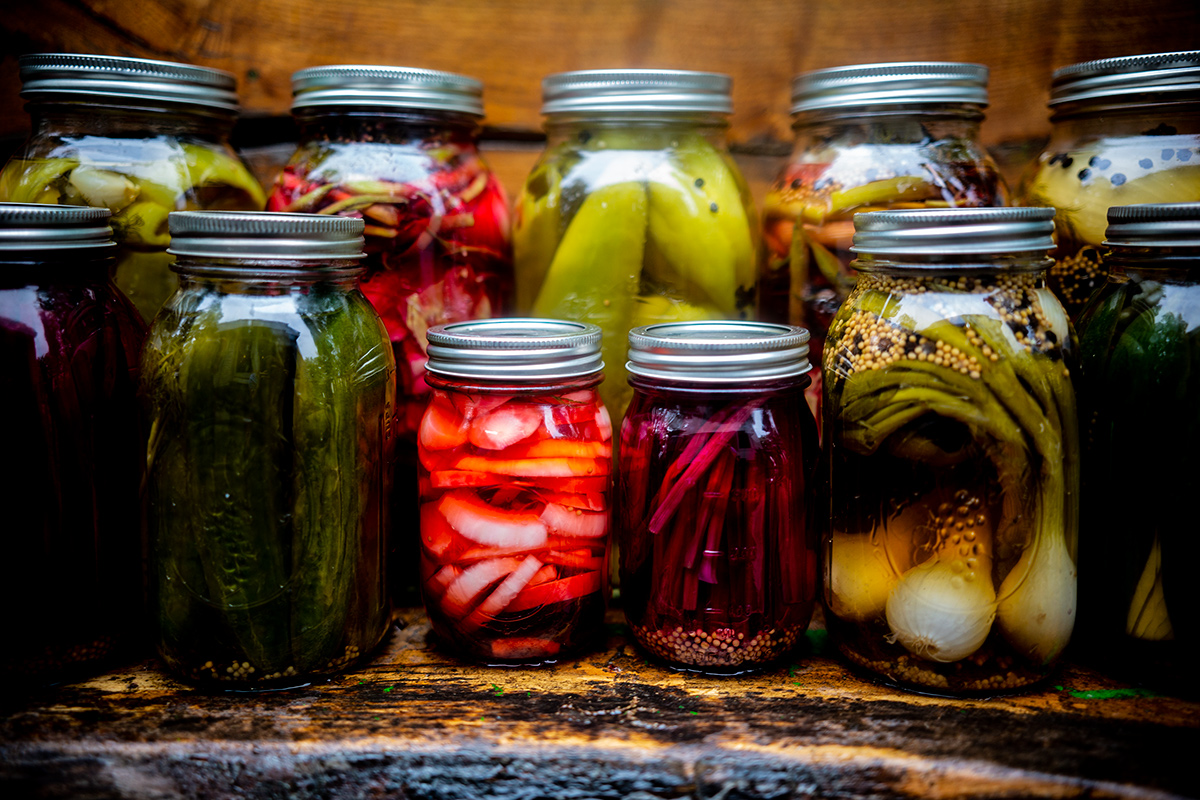Armenian Pickling: The Preservation of Memories

“Arianna jan, you are too skinny!”
My Armenian “pseudo mom” constantly greeted me with this loving phrase during my childhood and teenage years in Alaska. After exclaiming her concern, she would immediately grab my plate and begin filling it with more food from the abundantly stocked table.
She had immigrated to Alaska from Yerevan in the late 1970s through marriage to an American man, which meant it wasn’t uncommon to find tolma (տոլմա) piled strangely next to a big helping of fried chicken. If she wasn’t offering me a plate of food, it would be another ladle full of yogurt soup “s’pas” (Սպաս)—still one of my favorite comfort foods—or a larger piece of lavash (լավաշ) stuffed generously with feta and fresh cilantro.
Some may think it impolite to comment on another’s weight or appearance so directly, or physically take another’s plate from them and slop food on it, but this was a language of love. And I knew that. I would laugh, thank her, and continue nibbling as she would tease me about eating like a bird and wasting her food.
This was my first connection to Armenia, through family and food—neither of which can be separated from the other when experiencing Armenian culture. Food gathers the family; family gathers the food.
These treasured memories came back to life with intensity this month as I joined the team for the Folklife Festival’s Armenia: Creating Home program to pickle vegetables and prepare fruit compotes. We had decided to emulate the saying “a summer thorn is a winter sweet” and dove into a kitchen full of peppered vinegar brine scents, friendly chatter, and cabbage. Lots and lots of cabbage. Beets. Peppers. Radishes. Garlic. The trash bin grew desperate for a compost pile as we threw in leftover bits from our incessant chopping.

-
1 / 6Festival staff prepare nectarines for Armenian style fruit compote.Photo by Emma Cregan
-
2 / 6Armenia program coordinator Arlene Reiniger prepares food while program curator Halle Butvin tends to sterilizing the jars.Photo by Emma Cregan
-
3 / 6Halle Butvin and foodways coordinator Arianna Sikorski taste test the foods before preserving.Photo by Emma Cregan
-
4 / 6Cucumbers, cabbage, and green onions go in for pickling.Photo by Emma Cregan
-
5 / 6Pickle party in full swing!Photo by Emma Cregan
-
6 / 6Fruits prepare to be compote.Photo by Emma Cregan
Click on the photo above to view full slideshow
We tried an Armenian recipe by Olia Hercules that required an entire head of garlic, French beans, beetroot, spring onions, and (of course) cabbage with our own creative mixture of peppercorns and mustard seeds spilling into the line of tightly stuffed jars.
When the vegetables were done, we were onto the sweets, scurrying for enough sugar to boil and watching the pot intensely to make sure it became simply hot sugar water and not caramel for our collection of apricots, cherries, and berries. Although it took us the better half of the day to finish, it was a large feat made simple by the power of a group.
As the final lid was sealed and a beautiful finished rainbow of jars appeared before us, I couldn’t help but watch the kitchen buzz in gentle nostalgia. Although pickling is found in many cultures, we had just illustrated Armenian preservation specifically: not only the preservation of delicious savories and sweets, but also the preservation of tradition and family. We shared about our relationships, we laughed at our mistakes, and we connected through our own creativity and personal recipes. Our lives and stories were shared around a common task, a familiar taste that could be stored and remembered for later; something particularly essential to a culture scrambled by diaspora.
If my brief memories were sparked as I snacked on some extra cabbage bits, then surely pickling is about not only ensuring food for winter, but also a taste of memories that preserves generations.
These jars will be set up as a background for the public to take selfies at the Folklife Festival as part of Armenia’s Food Memories tent, where visitors will have a chance to share their own stories. Take the opportunity to preserve your own history and learn about another’s through Snapchats and photos, but most importantly, through memories.

Arianna Sikorski is a foodways coordinator for the 2018 Folklife Festival and a cultural events producer, curator, and consultant in the arts and culture field. She completed her graduate work in international arts management focused on food as a cultural heritage, art form, and educational tool for international exchange and understanding.






